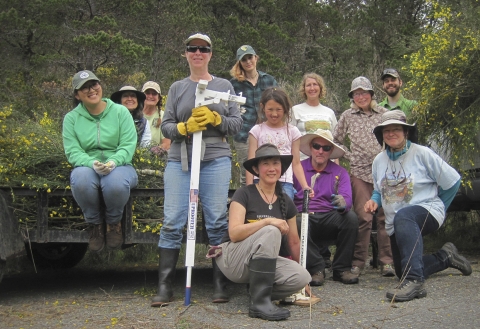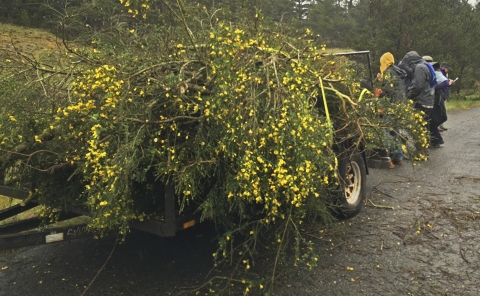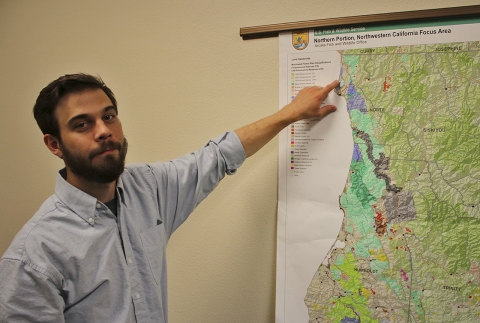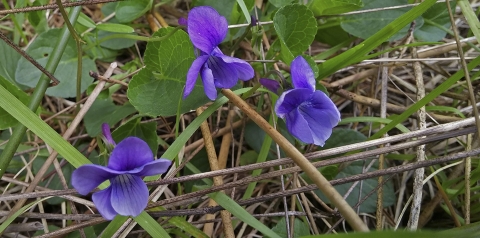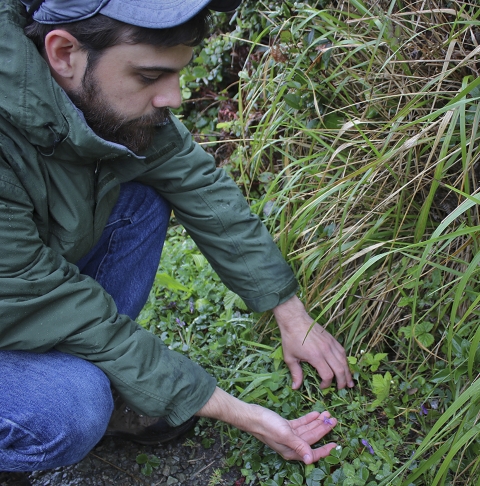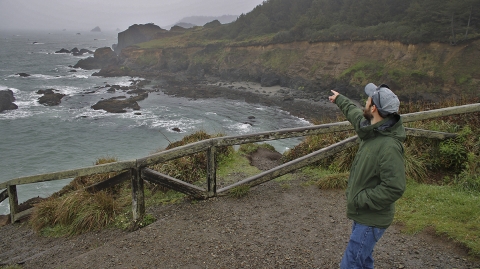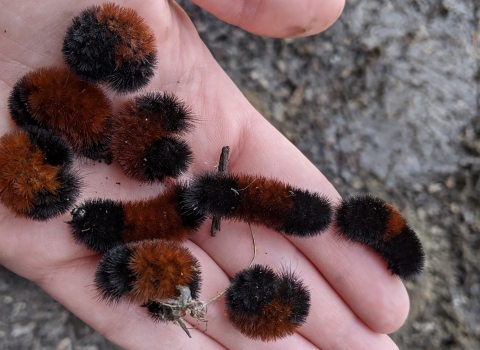The Oregon silverspot butterfly is beautiful and rare.
Unfortunately, that beauty and rarity is at risk due to habitat degradation. And while the danger is real, there is a plan to address it led by the U.S. Fish and Wildlife Service and their partners.
The butterfly, listed federally as threatened since 1980, is only found in four places in the world: North of Lake Earl, California, and the Siuslaw National Forest, Mt. Hebo, and Cascade Heads. Additionally, the butterfly will be found in Saddle Mountain where they will be reintroduced for the first time this spring/early summer and in Nestucca Bay National Wildlife Refuge, where they will be introduced this summer after being extinct since the 1970s.
Currently, the Service’s Arcata and Newport Fish and Wildlife offices are working with various partners to include multiple zoos, universities, non-profit organizations, local parks and the U.S. Forest Service to attempt to save the species with the hope of eventually taking it off the endangered species list.
One passionate partner is the Tolowa Dunes Stewards – a group of citizens from the Crescent City and the surrounding area, dedicated to the restoration and conservation of the Tolowa Coast and education about these lands.
An invasive species is any plant or animal that has spread or been introduced into a new area where they are, or could, cause harm to the environment, economy, or human, animal, or plant health. Their unwelcome presence can destroy ecosystems and cost millions of dollars.
Learn more about invasive species that has negatively altered the habitat around the Oregon silverspot butterfly’s food source (as caterpillars) – the leaves of Viola adunca or Western Dog Violet; early blue violet. Photo courtesy: Tolowa Dunes Stewards
This past April 14, 2018, the Tolowa Dunes Stewards with the Service and other partners participated in the 5th annual Scotch Broom Bash at the Lake Earl Wildlife Area. The event centered on the removal of Scotch broom, an invasive species that has negatively altered the habitat around the butterfly’s food source (as caterpillars) – the leaves of Viola adunca or Western Dog Violet; early blue violet.
A total of 14 volunteers cleared one-half acre of habitat, which filled a 40 cubic-yard dumpster. The Service also incorporated a study at the Bash to look at violet densities before and after Scotch removal over the next few years, in order to quantify the response of the violets.
“I just love this Scotch Broom Bash because it is such a joy seeing restoration and recovery arrive on the north shore of Lake Earl – at long last,” said Sandra E. Jerabek, of the Tolowa Dunes Stewards. “The Pacific Shores subdivision has been home to hundreds of silverspots and other animals over time. This recovery is evidence of the incredible resilience of native life – if we can just help it along as we did last Saturday (April 14).
“We also viewed areas along the subdivision roads where we removed Scotch broom and they are now full of ponds with happy frogs and other life.”
Clint Pogue, a biologist with the U.S. Fish and Wildlife Service Arcata office, who helped organize the event, also felt a sense of accomplishment.
“The last few years we’ve been able to take out some dense stands of Scotch broom and open up areas for the habitat for the butterfly and the violet,” said Pogue, who is leading the silverspot project for the Arcata office. “We are whittling down the areas that we can get to.”
The Service and their partners have annual monitoring stations spread throughout the habitat area with a goal to get weekly butterfly counts starting in early July for 10 weeks. Another goal is to acquire land and make a contiguous area of ownership of agencies such as California Department of Fish and Wildlife and California State Parks.
“As public agencies acquire more parcels there will be additional areas able to be treated,” said Pogue. “I do think it is possible for it to be taken off the endangered species list. I think there is a lot of potential.”
The partner efforts also include the work of local zoos, such as the Woodland Park and Oregon Zoos, who captive-rear the silverspot caterpillars before releasing them. The hope is the caterpillars will pupate, emerge as adult butterflies, and reproduce in the wild.
Another endeavor is underway with Nestucca Bay and the Institute for Applied Ecology which works with the Coffee Creek Women’s Correctional Facility to grow the violets. The violets typically grow in coastal prairie areas kept open by the disturbance of the ocean. Salt spray is important to maintain the constant changes necessary to allow the violet to grow in a less competitive environment.
“Coastal prairie natural communities can be enhanced for Oregon silverspot butterfly by planting violets in those areas,” said Pogue. “One thing that people can do is if they have a parcel of land they’re not using for agriculture or have an interest in converting from agriculture back to something natural – they can plant native nectar sources that would bloom and provide nectar from early July to mid-September.”
A major concern for Pogue is that coastal prairie systems are exceedingly rare because they overlook the ocean, are easy to develop, farm, and turn into anything except coastal prairie.
“We’re losing habitat for the species and have lost a lot of it due to development along the coast,” said Pogue. “We are also experiencing encroachment from shrubs and conifers into these coastal prairies due to disturbances that are not happening such as grazing from elk or lack of fires.”
Over the past three years Pogue says the Service has seen decreases in the California population. “It is unmanaged – hundreds of miles disjunct from the nearest population that we know about, so that may be a signal that we need to take more dramatic steps to manage it,” he said. Only seven silverspots were counted during surveys in 2017, compared to an average of 440 over the previous 11 years.
The Arcata office is currently in discussion with the Newport Fish and Wildlife Office about possible augmentation of the California population at Lake Earl using captive-reared caterpillars and pupae similar to previous efforts in Oregon.
“People can help by leaving an area in their yards with native plants,” said Anne Walker, biologist with the Newport office. “If we can get 10 populations with 200 to 500 butterflies for 10 years, we can delist the species.”
“Butterflies can be a sensitive species due to a multitude of factors,” said Pogue. “Potential effects of chemicals on the landscape can be detrimental and the sensitivity butterflies have to these habitat changes can serve as an early indicator of degradation of the integrity of our natural communities which provide great places to recreate, see nature as well as ecosystem services to humans.
“It can also serve a big warning sign that things are going downhill – declines in population of that butterfly might be a product of the degradation of the natural community. We need to pay attention to that and look to understand what is going on in these cool coastal prairie communities.”
Partners include: The California Coastal Commission Whale Tail License Plate Grants Program, Oregon Zoo, Sequoia Park Zoo, Woodland Park Zoo, Oregon Parks and Recreation, Siuslaw National Forest, Lewis and Clark National Historical Park, Del Norte Solid Waste Management Authority, Hambro WSG, Recology Del Norte, Institute for Applied Ecology, The Nature Conservancy, Oregon State University, Pacific University, University of Washington, Washington State University – Vancouver, Tolowa Dunes Stewards and California Department of Fish and Wildlife.

